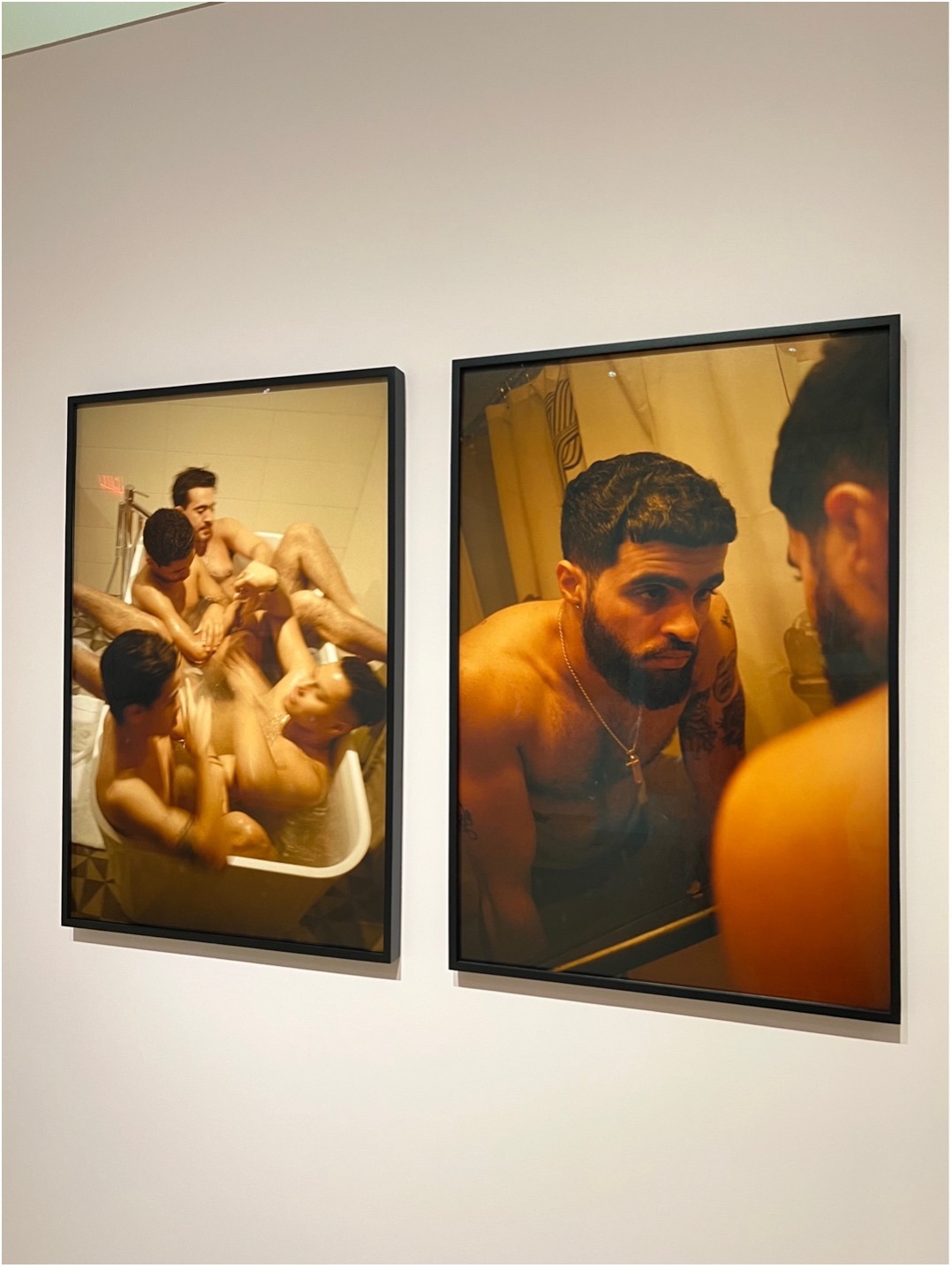Photo Essay: Dean Majd's Hard Feelings at The Museum of the City of New York
Dean Majd began using a 35mm camera to challenge notions of gender normativity and gender-expression by photographing the everyday intimacy of his group of male friends in New York City. His photos liberate our thoughts grounded in heteronormative perceptions, enabling us to accept the nuances of male identity, friendship, and intimacy.
Dean’s work is currently on display at the Museum of the City of New York as part of the New York Now: Home Triennial exhibition. His two images, bohemian rhapsody (2017) and dallas (phoenix ash) (2022), are part of the series titled Hard Feelings. As I explore photographic interiors in Dean’s two photos, I examine how his imagery subverts the one-dimensionality of masculinity in homosocial male relationships. I use photographic interiors to reckon with Dean’s ability to inject ideas of male fragility, empathy, and fluidity, into his photographs of the mutual warmth between male bodies.
Portraiture evokes a certain realism that helps Dean thread the themes of truth, time, and domestic spaces together. In bohemian rhapsody (Figure 1), we see four male friends crammed into a single bathtub. The high angle used to capture the four men in the tub, provides us with a bird’s eye view of the scene. Yet, it is a close-up insofar that there are very few elements of the background pictured. In the portrait, two of the men have their feet sticking out of the tub. This simultaneously conveys that not all the men in the tub are of equal physical size, but their assemblage is such that reveals their emotional uniformity.
This positioning also helps balance out the composition of the image itself. The physical features of their faces are captured in a moment of movement and thus blurred; but the men all share the same golden brown skin tone and same dark brown hair colour. This aesthetic cohesion helps assemble the individuals into a visualized brotherhood, akin to how children of the same family are often bathed together in their youth. The blurriness of the bodies warps our ability to perceive whether the individuals are wearing any clothing and relays the immense vulnerability of this moment. Yet, the very fact that we cannot determine whether the individuals are nude is another indication of Dean’s attempt to collapse the lines between homo and heterosexual male bonding rituals.

What Dean conveys through this depiction of what seems like a candid moment amongst friends, is the possibility of male bonding. The photograph immediately challenges our conventional visualization of male bodies, with the initial glance encompassing feelings of confusion or discomfort. Yet, the warmness of the light and the colors in the image soften this tension. The lighting helps solidify emotions of the home and safety within the domestic space. He invites us to question why men feel required to alienate themselves from an honest connection with other males. The physical overlapping of these male bodies helps to confront the layers of shame and fear attached with notions of physical nurturing within male relationships. We can also meditate on the title of the work, bohemian rhapsody, as an integral part of Dean’s message. Perhaps a reference to the song by Queen, which is oft referred to as a sonic confession about the peace associated with living an authentic, liberating life.
dallas (phoenix ash) (Figure 2) was taken five years after bohemian rhapsody, and the pair of images together serve as the opening and closing of an emotionally explorative journey for Dean’s closest friends. In the photo dallas, Dean’s cousin is the only figure photographed through a close-up. We see his face and body reflecting in the mirror and we also see part of his bare back in the frame as he hunches over with his slightly flexed biceps. His body is positioned leaning forward closer to himself, with his arms as his anchor, leaving his religious cross chain to dangle away from his body. His forehead is slightly furrowed as if he’s opening his eyes as wide as possible to add clarity to his sight. This expression reinforces his direct introspective gaze into his own eyes, that are filled with emotions of sadness and wonder. What’s interesting about this composition is that the reflection is present, but not the camera. This image is in no way a selfie, but almost a raw exposition of the moment when an individual encounters their own self, and the location of the private bathroom affirms this. In this image, Dean positions his cousin, the human, as the origin point of the journey towards discovery and reflection.
Perhaps the most jarring form of confrontation was Dean’s choice to capture the intimacy of friendship and identity in a highly private and enclosed space. The bathroom as the site of these portraits anchors us in interiors of privacy, secrecy, and the home, further speaking to the invisibility intrinsic to the exploration of the bounds of masculinity. These two portraits expose us to the non-verbal forms of intimacy between friends and the confrontations one has with oneself. Dean documents the multiplicity of masculine relationships to turn our attention to human subjectivity and the body as central to the spiritual and emotional journey. His images break the confines of gender normativity to confront our understandings of contemporary kinship, sexuality, and human expression.
Post a comment